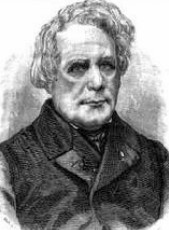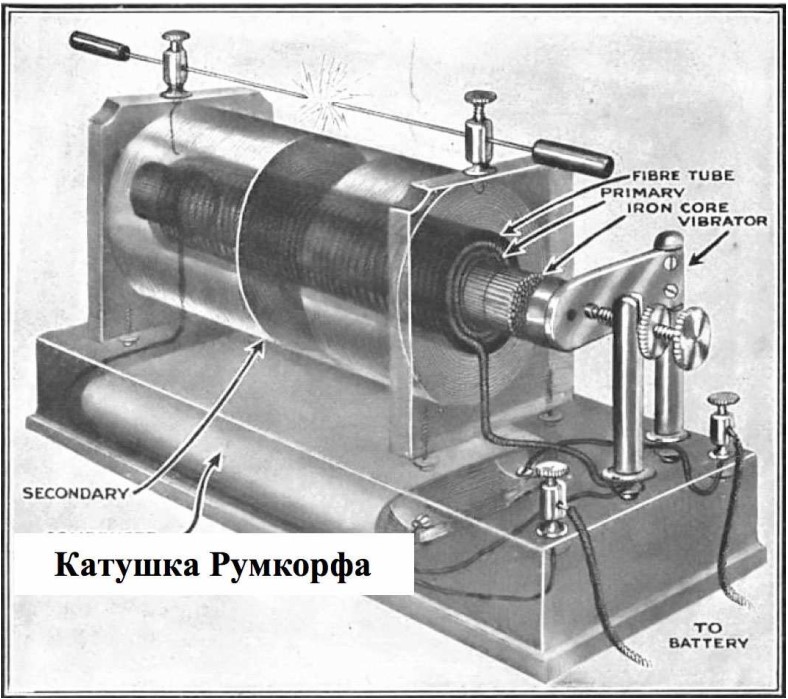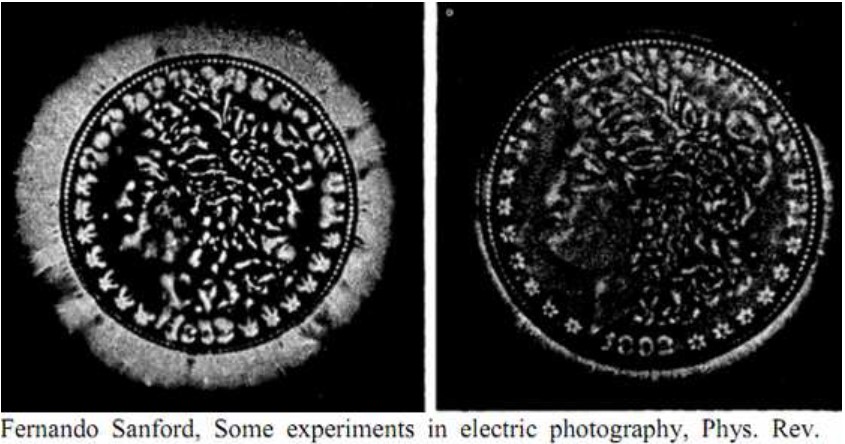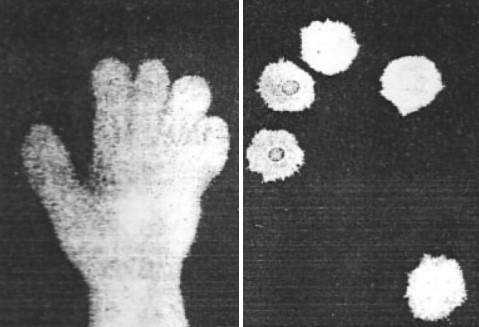Serbian (US) inventor.
1892 In his laboratory in Colorado, Tesla spent a lot of experiments with high voltage and high- frequency currents. In his lectures and demonstrations in London and Paris Nikola Tesla demonstrated the discharge of his own body and the possibility of gas discharge discharge photographing living organisms in high-frequency currents with the camera. He reproduced the discharge items, corona discharge, and photographed on a photographic plate. His method he called "gas-discharge visualization" of his experiment, he wrote: "The human body has been exposed to a high-frequency electrical generator with a voltage of 2.5 million volts. It was an unforgettable effect. Away from the body long dischargeing bits, like the tentacles of an octopus. From spine beams of light fade. When a man pulls his hands, with the fingertips roaring flames erupt. This effect he called "cold fire» «Cold Fire».
In 1896, the United States, in Colorado Springs, Nikola Tesla put in a physical lab is interesting, but it is very risky experiment. On the generator capacity of 1 million volts it was placed ebony insulator large. He was placed on a metal plate connected to a DC generator. A similar plate was reinforced top. It is also connected to the generator. Nikola Tesla became the lower metal plate, which has been hard rubber pad and was in the field of high voltage. Picture taken at this point showed a bright discharge around the entire body of the scientist. Thus, for the first time in the history of mankind was caught discharge around the person. This phenomenon is called the Tesla effect.Tesla discovered a great therapeutic effect on the action of high-frequency field. When high frequency current is distributed over the skin surface (skin effect), and does not affect internal organs. In 1903, the Wardenclyffe laboratory produces and sells high therapeutic generators medical community across the country. Article 1894 The New York Times, Tesla describes the possible dangers if the voltage and frequency or a too low: In this case, the image of "streamers" cause a tingling sensation as the needle. If the oscillation frequency is quite low, the skin is likely to be broken due to a tremor, blood will be sprayed with great force in a spray or jet is so thin to be visible.
The Tesla Memorial Society


 Russian physicist and electrical engineer, SPGU, Professor of Forest Institute, St. Petersburg. Since 1877 Lachinov worked on the gas discharge visualization. During the first experiments filmed bright discharge (spark induction coil connected to a capacitor) or dim when entered in a long chain of the resistance gave a discharge discharge. The second and third series of experiments was carried out without a camera, the category of sliding along the surface of the dry bromzhelatinovoy plate and left her a trail that the manifestation is made visible, nothing else, as one of the first examples of the so-called gas discharge visualization.
Russian physicist and electrical engineer, SPGU, Professor of Forest Institute, St. Petersburg. Since 1877 Lachinov worked on the gas discharge visualization. During the first experiments filmed bright discharge (spark induction coil connected to a capacitor) or dim when entered in a long chain of the resistance gave a discharge discharge. The second and third series of experiments was carried out without a camera, the category of sliding along the surface of the dry bromzhelatinovoy plate and left her a trail that the manifestation is made visible, nothing else, as one of the first examples of the so-called gas discharge visualization. 
 Catholic priest, Porto Alegre (RS), Brazil. He studied physics and invented electrophotographic (electric discharge) camera which he called "Bioelectrographic Machine". He developed a method of photographic electric discharge. He received hundreds of pictures of various objects discharge, including humans. He called the discharge around the human body «Perianto». He conducted the study from 1904 to 1912. During the eight years of research, he made hundreds of photos. He called the discharge around the body «Perianto». But his invention was not registered as the device was confiscated church. Some of the drawings have been preserved in books devoted to his biography. In Porto Alegre is a museum dedicated to Morua.
Catholic priest, Porto Alegre (RS), Brazil. He studied physics and invented electrophotographic (electric discharge) camera which he called "Bioelectrographic Machine". He developed a method of photographic electric discharge. He received hundreds of pictures of various objects discharge, including humans. He called the discharge around the human body «Perianto». He conducted the study from 1904 to 1912. During the eight years of research, he made hundreds of photos. He called the discharge around the body «Perianto». But his invention was not registered as the device was confiscated church. Some of the drawings have been preserved in books devoted to his biography. In Porto Alegre is a museum dedicated to Morua. 